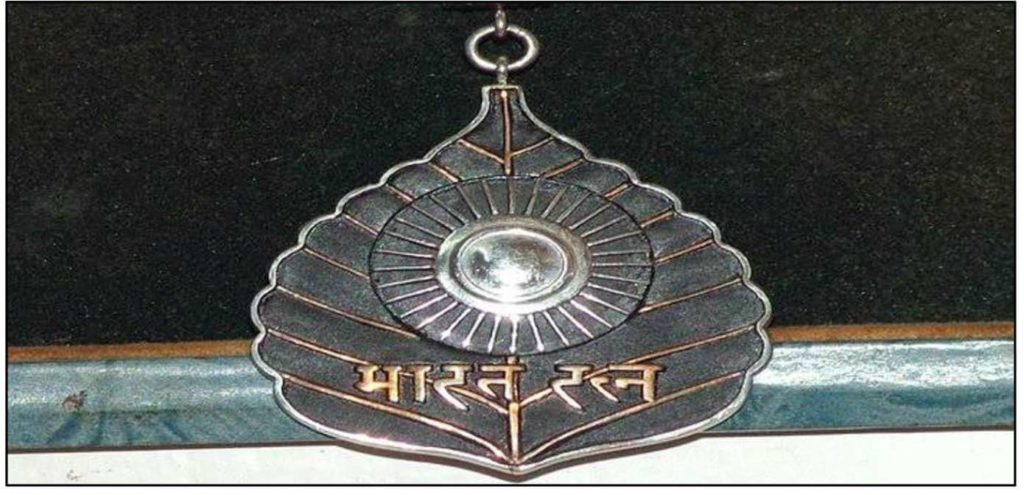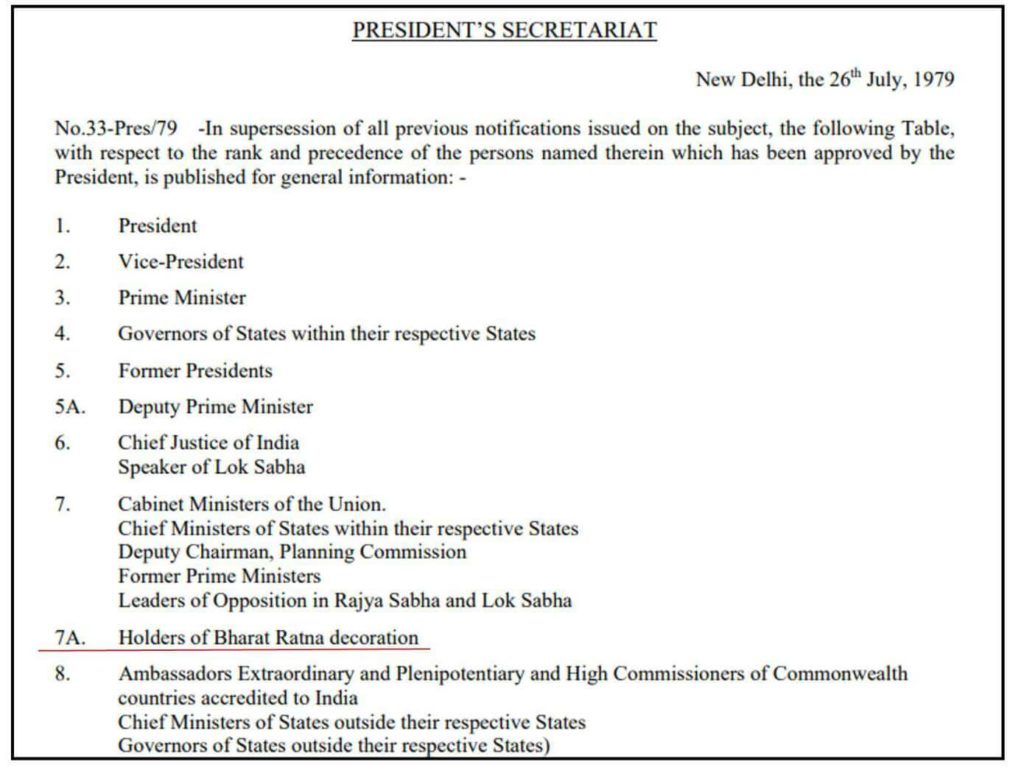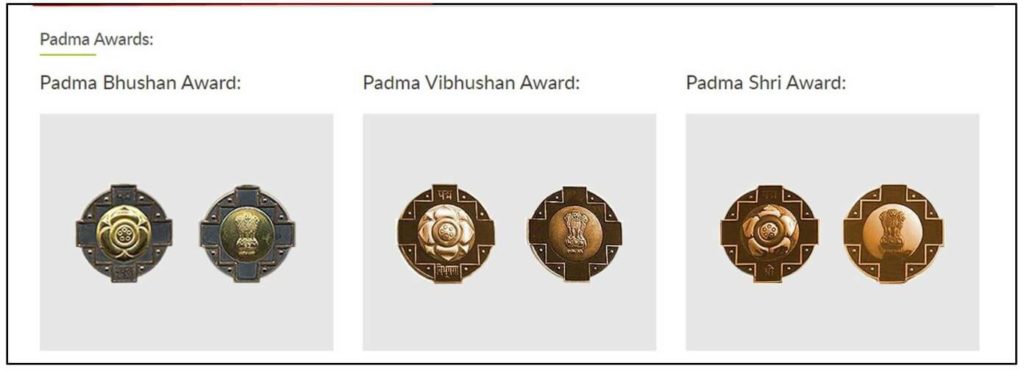[orc]Government of India confers four different civilian awards. Here is an explainer on what they are, who are they given to and award trends so far.
Civilian awards are conferred by the Government of India to honour and recognise the contributions of Indian citizens in various fields. The highest civilian award in India is the Bharat Ratna. This is followed by Padma Vibhushan, Padma Bhushan and Padma Shri in the same order. These awards are announced on the eve of Republic Day every year. No distinction is made on grounds of religion, race, gender or sex. The awards are conferred by the President of India in ceremonial functions held at Rashtrapathi Bhavan.
Bharat Ratna is the highest civilian award conferred in India
Bharat Ratna was constituted in 1954. This award is conferred to individuals as a ’recognition of their exceptional service/ performance of the highest order in any field of human endeavour.’ This is the highest civilian award that is conferred by the Government. Earlier, those who contributed towards advancement of science, art and literature, and public service were given prominence. However, this was later extended to any field of human endeavour.
A maximum of only three Bharat Ratnas can be conferred annually
For Bharat Ratna, recommendations are made by the Prime Minister to the President. There is no formal recommendation for this award. The recipients of the award receive a certificate signed by the President of India, called ‘Sanad’ along with a medal. No monetary grant is awarded. The maximum number of Bharat Ratna awards that can be conferred in a year is three.

Of the total 48 Bharat Ratnas conferred till date, only five recipients were female
A total of 48 awards have been conferred till 2019. In 1954, Nobel Laureate Sir C V Raman, India’s first Vice President Dr S Radhakrishnan, and founder of Swatantrata Party C Rajagopalachari were conferred with Bharat Ratna. They were the first recipients of the award. Former Prime Minister of India, Indira Gandhi was the first female recipient of this honour. She was conferred with the award in 1971. Till date, only five women have received this award. Mother Teresa, Lata Mangeshkar, M S Subbalakshmi and Aruna Asaf Ali are the other female recipients.
Nobel Peace Prize winner, Nelson Mandela, often referred to as the ‘Gandhi of South Africa’, Khan Abdul Gaffar Khan of Pakistan, who is widely known as ‘Frontier Gandhi’, and Mother Teresa are the only three Non- Indian citizen recipients. However, Mother Teresa became a naturalised citizen. Though Amartya Sen & Pandit Ravi Shankar are of Indian origin, they were given the award as being Citizen of UK & USA respectively.
In 2019, former President, Pranab Mukherjee, Bhupen Hazarika and Nanaji Dheshmukh were conferred with the award.
Bharat Ratna awardees are extended certain benefits and facilities
As per the Home Ministry’s table of precedence, the recipients of Bharat Ratna are at 7A. This means that the recipients of Bharat Ratna are above state chief ministers and governors in protocols for official functions outside their respective state. They are also issued a diplomatic passport.
Factly’s earlier story on benefits extended to Bharat Ratna recipients is available here.

Padma awards were renamed in 1955
Until 1955, Bharat Ratna and Padma Vibhushan were the two civilian awards instituted by the Indian government. Padma Vibhushan had three categories- Pahela Varg, Dusra Varg and Tisra Varg. However, since 1955, these awards were renamed as Padma Vibhushan, Padma Bhushan and Padma Shri. These awards have been announced since then every year except during 1978, 1979 and 1993 to 1997.
Government servants except doctors and scientists are not eligible for Padma awards
Padma Vibhushan is awarded for ‘exceptional and distinguished service’ while Padma Bhushan is awarded for ‘distinguished service of a high order’. Padma Shri is awarded for ‘distinguished service’. The awards will be conferred to those who have distinguished themselves in their respective fields such as Art, Literature, Education, Social Work, Science, Public Affairs, Medicine, Engineering and any other field. There must be an element of public service in the achievements of the person who is being nominated for these awards. Government servants including those working in Public Sector Undertakings (PSUs) are not eligible for the awards except for doctors and scientists.

Padma awards committee received almost 50,000 recommendations in 2019
The Ministry of Home Affairs invites recommendations online every year between 01 May and 15 September. Thousands of recommendations are received from various sources such as ministries, institutes, ministers, MPs as well as private individuals. These are placed before the Padma Awards Committee. A total of 49,992 recommendations were received by the committee in 2019.

Prime Minister constitutes the Padma awards committee
Padma Awards Committee for 2019 was headed by the Cabinet Secretary and includes Home Secretary, Secretary to the President and four to six other eminent personalities. The committee then makes recommendations on the basis of life time achievements of the nominees. There is no rigid criterion for selection. However, the committee is supposed to look for public service achievements of the nominees and not just their excellence in the field.
On selection of candidates, investigating bodies of the government verify the candidates in order to check whether their character and past actions are honest and legitimate. Finally, the list is sent to the Prime Minister and President for approval. The names of awardees are published in the Gazette of India.
Only a maximum of 120 Padma awards can be conferred each year
The Padma Awardees are given a certificate and a medal (and a replica). They are not given any grant and do not get the benefits like Bharat Ratna awardees. A maximum of only 120 awards can be conferred each year excluding those conferred posthumously and those awarded to foreigners.
112 Padma awards were given in 2019 of which 21 were for women
A total of 112 awards including 4 Padma Vibhushan, 14 Padma Bhushan and 94 Padma Shri awards were approved by the President in 2019. Only 21 of them (19%) were female and 1 was transgender. Around 11 awardees were Foreigners, NRIs, PIOs and OCIs. As of 2019, 24% of all Padma awards conferred to sportspersons were conferred to cricketers.
Three awards were given posthumously. Usually, the awards are not conferred posthumously. Only in some highly deserving cases, if the demise is recent, the government confers the award.
To confer a higher Padma Award, a minimum period of five years should have been completed since the receipt of the previous award. Relaxations are made in exceptional cases.
Factly had earlier analysed the Padma awards data to conclude that more Padma Shri awards are conferred during election years to the Lok Sabha.


